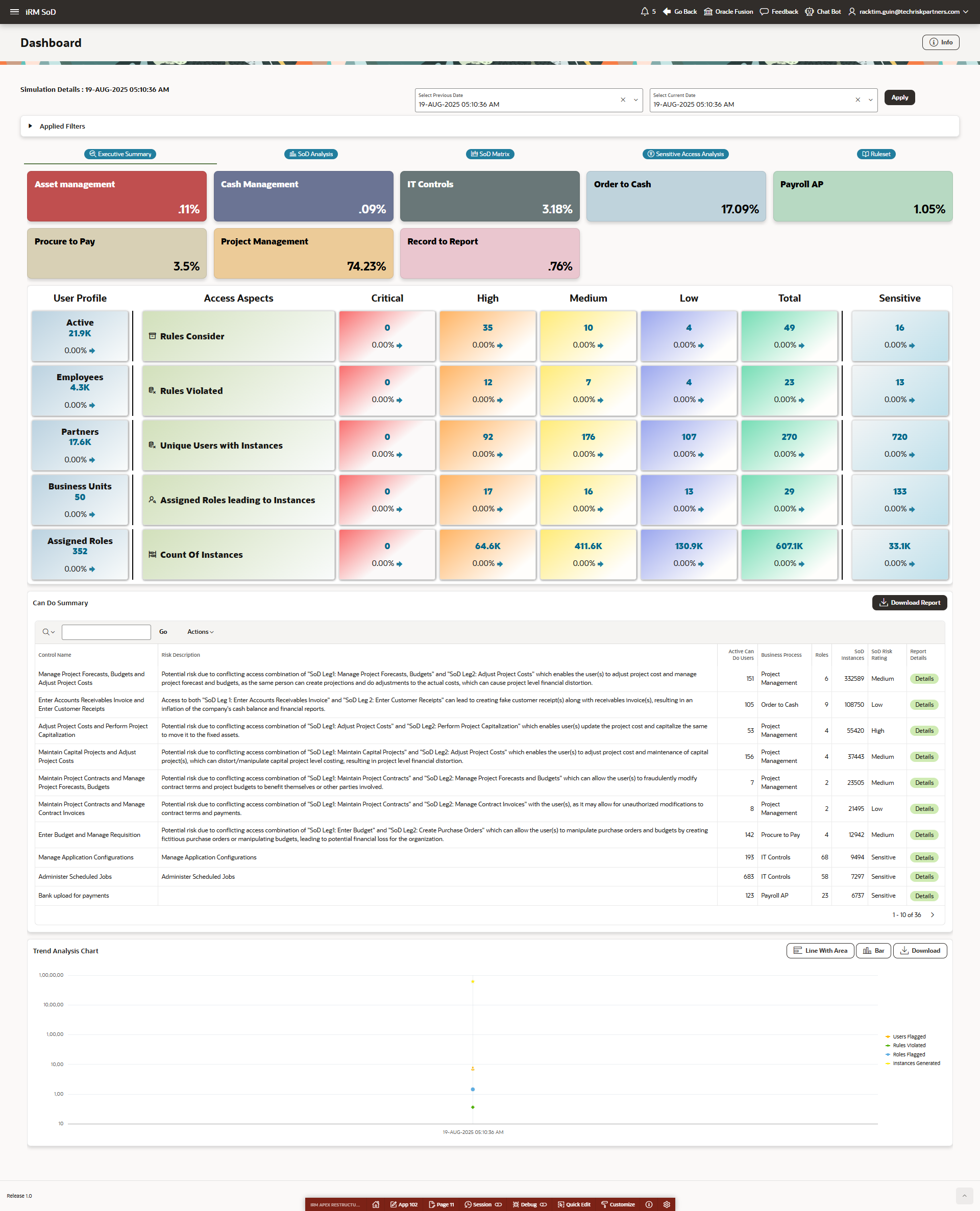
.png)

Centralized Monitoring
Provides a single platform to oversee employee roles, access levels, and system activities across the organization.

.png)

Provides a single platform to oversee employee roles, access levels, and system activities across the organization.
Identifies and highlights risky role combinations in real time to prevent fraud and operational errors.








Offers quick access to SoD violation reports for better transparency and compliance tracking.

.png)

Enables administrators to adjust roles efficiently, ensuring integrity, accountability, and secure ERP processes.
Key Risk Indicators (KRIs) are essential metrics that organizations use to monitor and flag potential risks that could adversely affect their operations. By using KRIs, organizations can proactively identify, assess, and mitigate risks before they escalate into significant issues, ensuring the stability and continuity of business processes.
✔ Customizable KRI Metrics: Allows organizations to design and tailor KRIs according to specific risk factors pertinent to their industry and operations. This customization ensures that monitoring is accurate, relevant, and aligned with the organization’s risk management strategy.
✔ Real-time Risk Monitoring: Offers continuous, real-time surveillance of risk indicators, providing immediate alerts when thresholds are breached. This feature enables organizations to quickly identify and respond to emerging risks, reducing the potential impact on operations.
✔ Comprehensive Reporting and Analytics: Provides advanced tools for analyzing risk data, generating detailed reports, and visualizing risk trends. This helps in understanding risk patterns, forecasting potential future risks, and making data-driven decisions to strengthen risk management strategies.
✔ Threshold Setting and Alerts: Organizations can set specific thresholds for each KRI, ensuring that any deviation from the norm triggers an alert. This automated alert system ensures that potential risks are addressed promptly, preventing them from developing into more serious issues.
✔ Integration with Risk Management Frameworks: KRIs can be integrated with broader risk management frameworks, enabling seamless alignment with the organization’s overall risk governance and compliance strategies. This ensures a holistic approach to risk management.
✔ Early Risk Detection: KRIs provide early warnings of potential risks, enabling proactive measures to prevent issues before they escalate.
✔ Enhanced Decision-Making: By offering real-time data and analytics, KRIs support informed, data-driven decisions to mitigate risks effectively.
✔ Improved Risk Management: Customizable KRIs align with specific organizational needs, ensuring targeted and relevant risk monitoring.
✔ Timely Response: Automated alerts based on threshold breaches ensure prompt action, minimizing the impact of emerging risks.
✔ Holistic Risk Integration: KRIs integrate seamlessly with broader risk management frameworks, supporting a cohesive and comprehensive risk governance strategy.
ERM is a strategic approach to identifying, assessing, and managing risks across an organization, enhancing decision-making and operational resilience. It helps in proactively addressing risks to ensure business continuity and achieve organizational goals.
iRMCloud's easy-to-use dashboards provide a centralized, intuitive view of all risk-related data, making it simpler for managers to monitor, analyse, and respond to risks in real-time, thereby improving the efficiency and effectiveness of the organization's risk management process.
iRMCloud enhances ERM by offering user-friendly dashboards for a clear overview of risks, latest risk insights out-of-the-box for immediate risk identification, an inbuilt risk matrix for simplified risk evaluation, and regular updates to stay aligned with evolving risk landscapes.
The inbuilt risk matrix in iRMCloud simplifies the complexity of risk assessment by categorizing risks based on their severity and likelihood, aiding in prioritizing risks and formulating strategic responses, thus making the decision-making process more streamlined and data-driven.